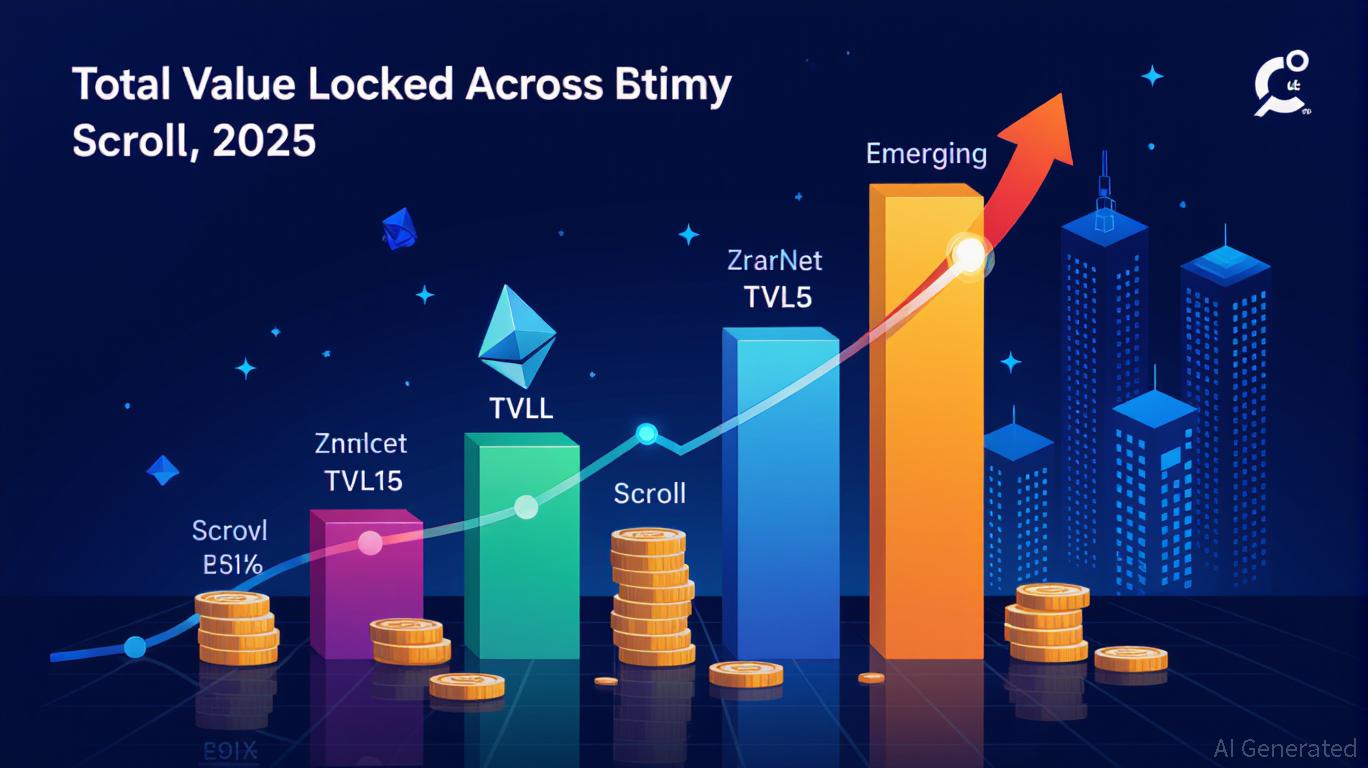Vitalik Buterin's Progress in Zero-Knowledge Technology and the Investment Opportunities within Ethereum's Layer-2 Ecosystem
- Vitalik Buterin prioritizes ZK technologies to optimize Ethereum's post-Merge scalability, targeting modexp precompile replacement for 50% faster ZK-proof generation. - ZKsync's Atlas upgrade enables 15,000+ TPS and near-zero fees by redefining L1-L2 liquidity, positioning ZK-based L2s as Ethereum's infrastructure backbone. - Dencun's "blob" data slashes L2 costs by 98%, driving Base and Arbitrum to surpass Ethereum's base layer in transaction volume and user adoption. - ZK L2s like ZKsync and StarkNet s
Technical Foundations: Vitalik’s ZK-Centric Vision
Vitalik Buterin has pointed out that the modexp precompile, an older feature used for modular exponentiation, is a major obstacle for scaling ZK-EVMs. Transitioning this function to standard EVM bytecode could cut ZK-proof creation times by as much as half, while also streamlining the
At the same time, Buterin has spotlighted ZKsync’s Atlas upgrade as a model for L2 scalability. This update achieves over 15,000 transactions per second (TPS), one-second finality, and minimal fees by transforming the liquidity dynamics between L1 and L2, as outlined in a

Market Dynamics: ZK L2s as Growth Drivers After the Merge
The Dencun upgrade to Ethereum in March 2024 further boosted the economic case for ZK L2s by introducing “blob” data, which cut L2 data posting expenses by 90–98%, as reported in a
From a financial perspective, ZK L2s are evolving into independent ecosystems. ZKsync’s revamped tokenomics, for instance, links the value of its ZK token to network earnings through mechanisms like buybacks and burns, creating a deflationary effect, as explained in a
Project Comparisons: ZKsync, StarkNet, and Scroll
During the third quarter of 2025, ZKsync’s Atlas upgrade showcased performance at an enterprise level, with its sequencer reaching 43,000 TPS and Airbender enabling transfers at just $0.0001 each, according to a
Investment Implications
The combination of technical breakthroughs and economic models in ZK L2s points to strong long-term prospects. For Ethereum, expanding L2 adoption could increase overall fees and boost ETH’s value, as L2 activity enhances the network’s usefulness. Still, issues like modexp inefficiencies and rivalry among L2s require careful consideration. Investors should focus on projects with transparent tokenomics, solid enterprise collaborations, and clear technical advantages—ZKsync’s Atlas and StarkNet’s Grinta are prime examples.

Conclusion
Vitalik Buterin’s advancements in ZK technology, along with the progress of L2 solutions like
Disclaimer: The content of this article solely reflects the author's opinion and does not represent the platform in any capacity. This article is not intended to serve as a reference for making investment decisions.
You may also like
Vivek Ramaswamy’s Strive buys 1,567 Bitcoin valued at $162 million
Crypto Wallet Exodus Acquiring Grateful to Expand Stablecoin Payments in Latin America
Bitcoin Miner Greenidge Settles New York Permit Dispute, Prompting Stock Spike
What Will Happen to Bitcoin and Altcoins if the US Government Shutdown Ends? – XRP Spot ETF Hype Begins